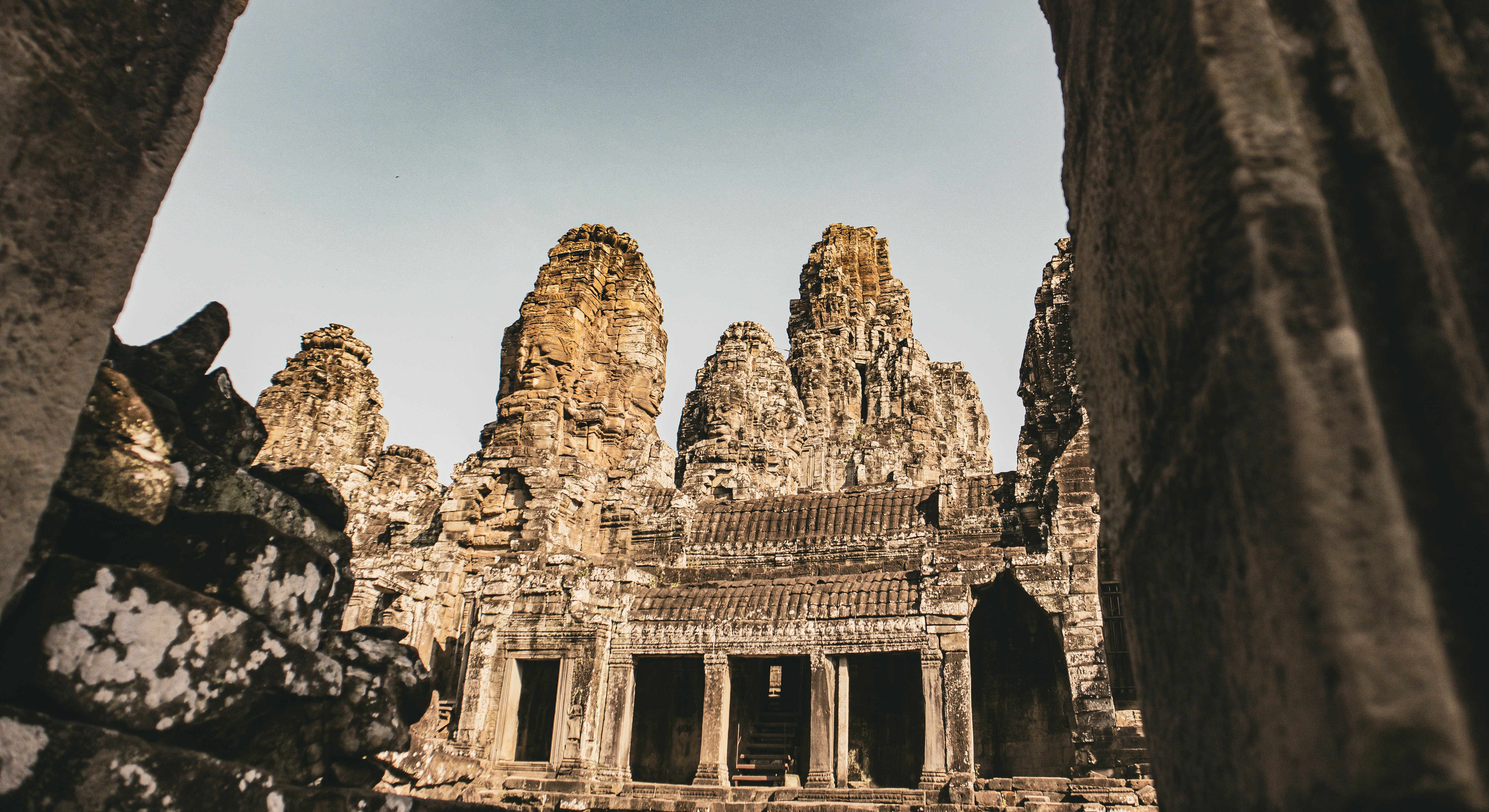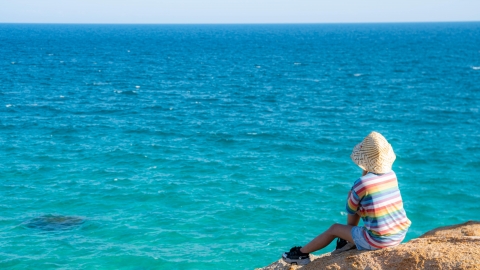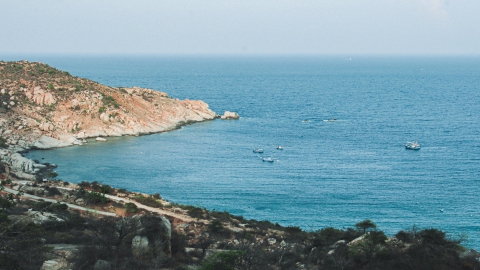Traveling to Cambodia from Ho Chi Minh City is quite convenient and easy. You can take a sleeper bus through Moc Bai border gate (Tay Ninh) to reach the capital Phnom Penh. Then, you move to Siem Riep, the capital of the Angkor Complex with thousands of large and small temples recognized by UNESCO as a cultural heritage of humanity.
Each temple in the Angkor complex, although having many similarities, has special values, and has its own distinct highlights. If Angkor Wat is famous for its grandeur and massiveness, Ta Prohm is mysterious with its strange tree roots, then the beauty of Bayon has been carved on the stone walls here, a system of stone sculpture masterpieces nearly a thousand years old.

The majestic view of Bayon.

Bayon is as massive as a mountain.
Bayon is one of the most beautiful and attractive temples in the Angkor sanctuary complex. Located about 5km from Angkor Wat, Bayon was built in the central position of the Angkor Thom citadel. Each temple in the Angkor complex, although having many similarities, has special values, and has its own distinct highlights. If Angkor Wat is famous for its grandeur and massiveness, Ta Prohm is mysterious with its strange tree roots, then the beauty of Bayon has been carved on the stone walls here, a system of stone sculpture masterpieces nearly a thousand years old.
Bayon Temple was built by King Jayavarman VII around the 12th and early 13th centuries. The temple stands out with 54 large and small towers, each tower is carved with 4 faces of Brahma, facing four different directions. Bayon Temple has a total of 216 faces, these faces are also the symbol of Bayon.


The sculptures depict Khmer soldiers wearing cloth necklaces, while Champa soldiers wear pointed hats.
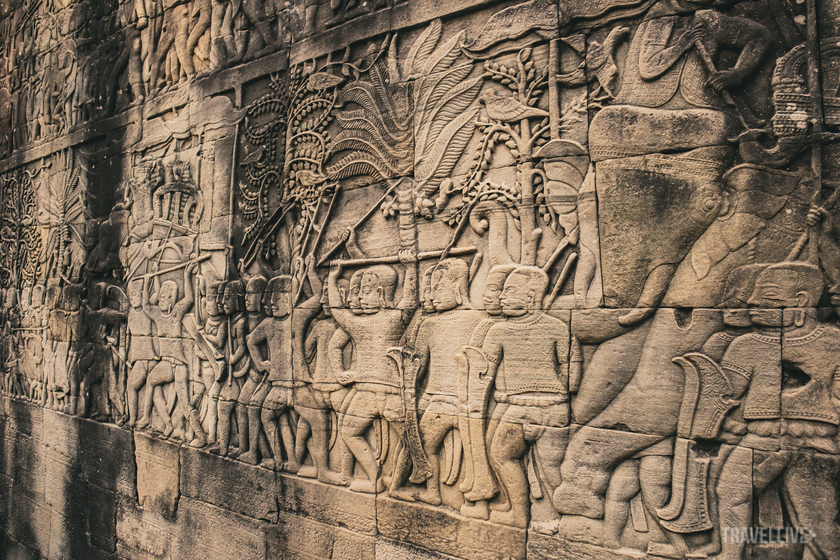
Khmer soldiers went to battle on foot, while generals rode war elephants.

Champa soldiers marching. High-ranking generals ride elephants, while some others ride horses.
Researchers believe that from the beginning, the Angkorians intentionally built Bayon in a very massive way, making it look like Mount Kulen, a sacred mountain in Hindu beliefs.
On the walls at Bayon, the ancient Angkorians, with their extraordinary sculpting skills, created a complex network of vivid and extremely sophisticated images, leaving behind for posterity fascinating stories that remain intact in their appeal after all this time.
The reliefs depict a naval battle between the Khmer and the Cham. The battle took place in 1181, and the Khmer won a resounding victory under the command of King Jayavarman VII.
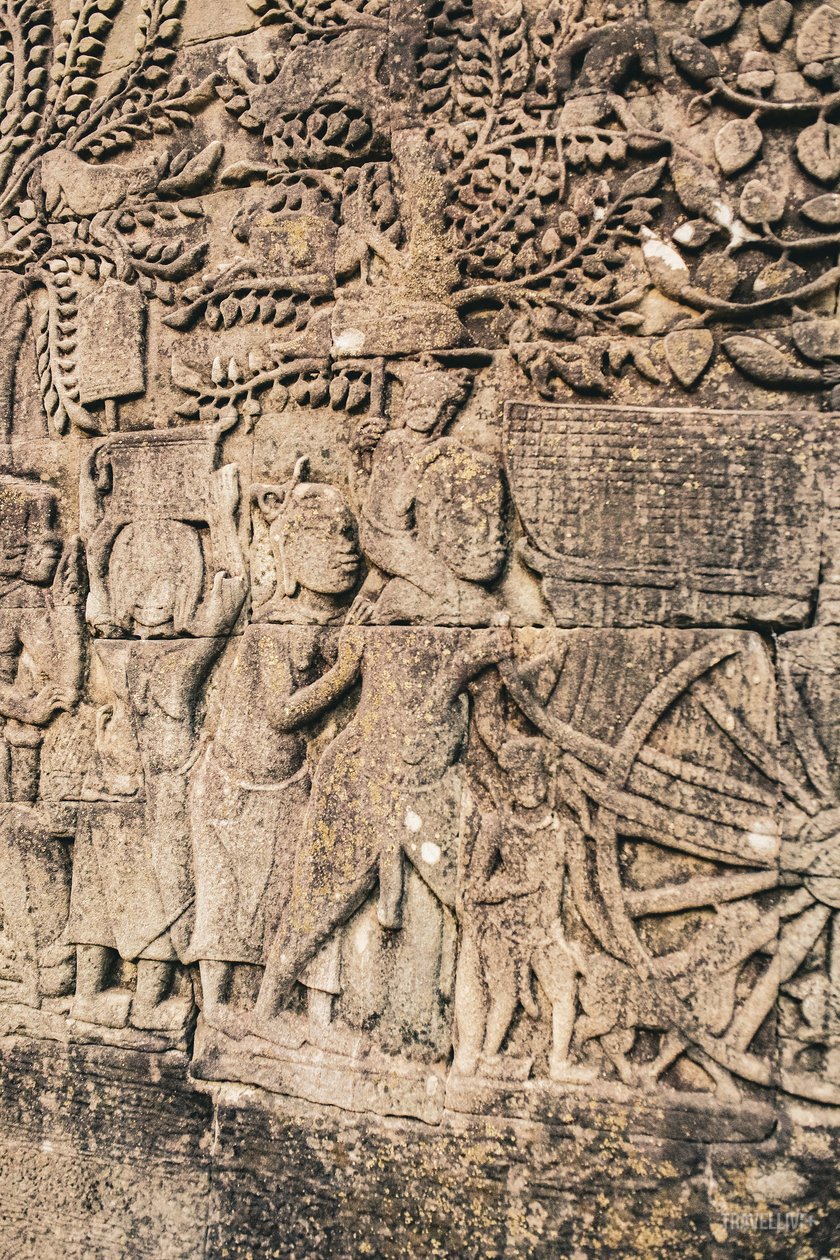
Besides, the reliefs also vividly depict the customs and lifestyle of ancient Khmer people.
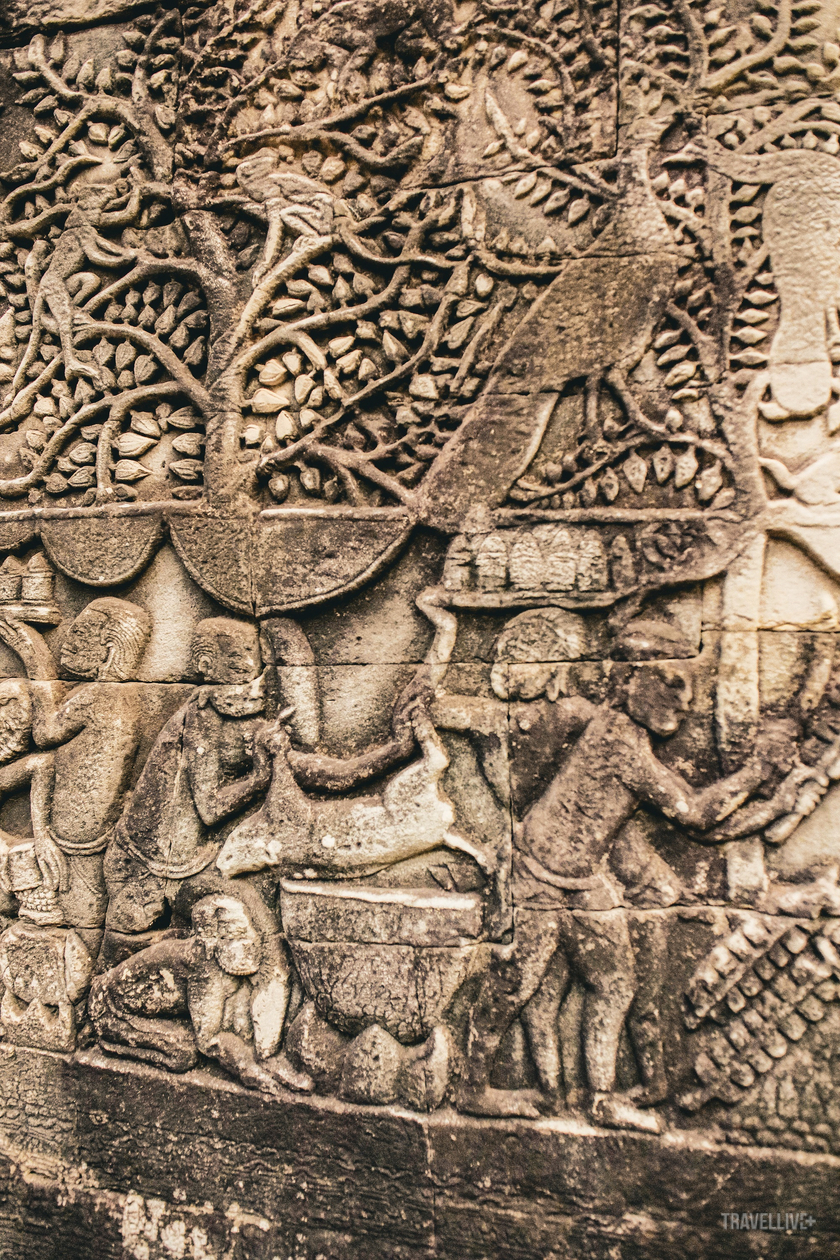
Besides, the reliefs also vividly depict the customs and lifestyle of ancient Khmer people.
The Bayon Temple is important because it allows us to better understand the beliefs, values, and power of the Khmer Empire. The temple was built in the exact center of Angkor Thom, which means “Great City,” signifying its connection to heaven and earth. Both the architecture and the carvings inside provide future generations with an insight into the history of the Bayon Temple. Cambodians often visit the temple during major holidays or important events to visit and pray for the gods to make their wishes come true.
The Bayon symbolizes both the power of the Khmer Empire and the king himself. The temple exudes both power and humanity, two qualities that any successful leader should possess. As you walk through and around the temple, you begin to see more and more giant faces, both staring down at you from the tower and at eye level.
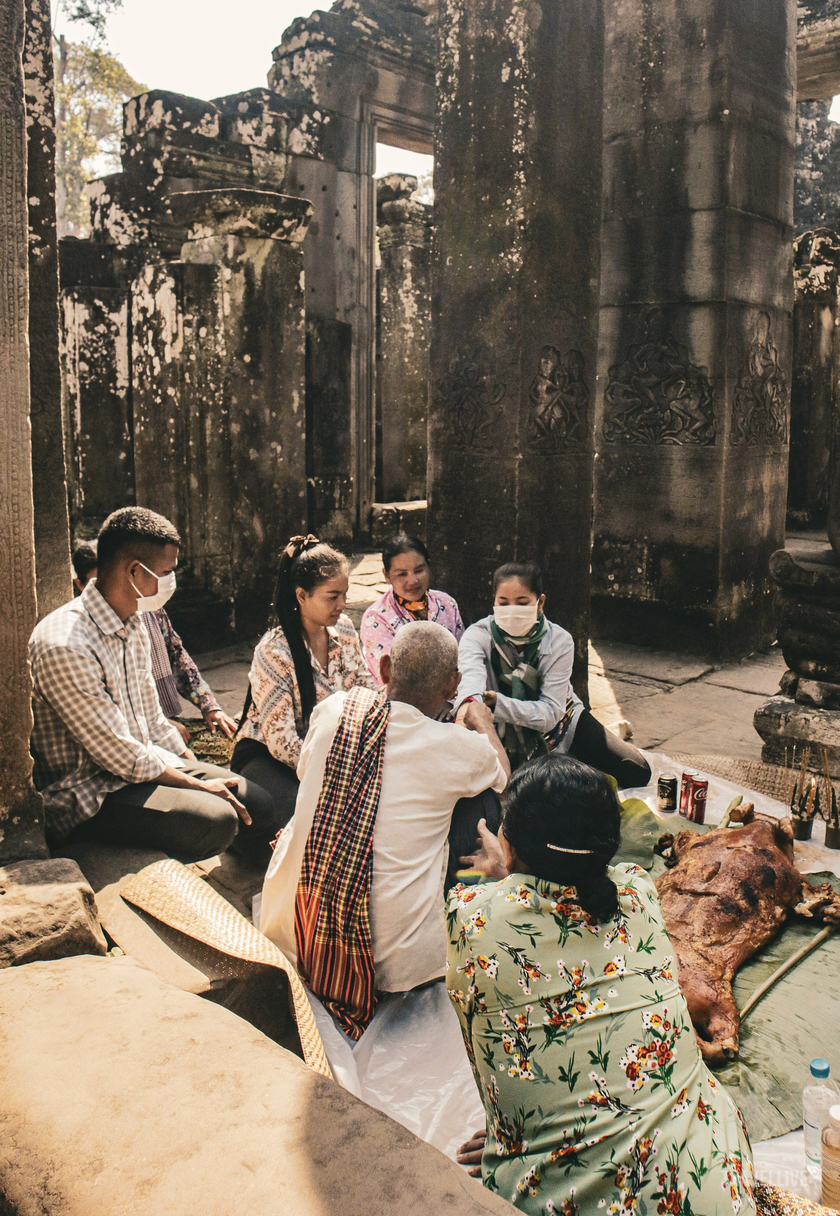
Bayon is not only a tourist destination but also an important pilgrimage site for local people.
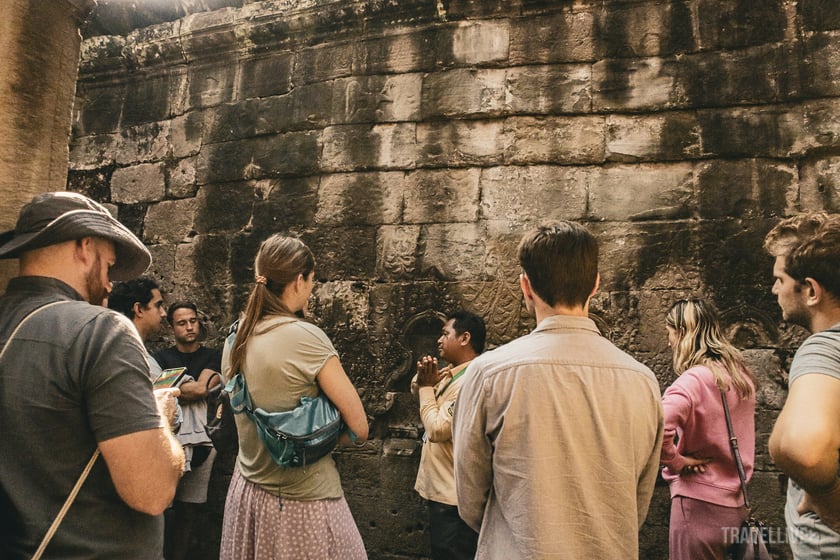
Western tourists seek out the relics of the glorious Angkor empire
About the author: Thinh, a writer on cultural geography, currently lives and works in Ho Chi Minh City. Thinh is a storyteller, through articles, photo collections or reports. The author's stories are very personal shares from his personal perspective and feelings on his journeys around the world.





